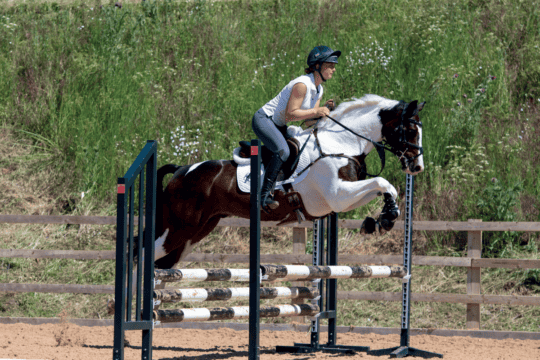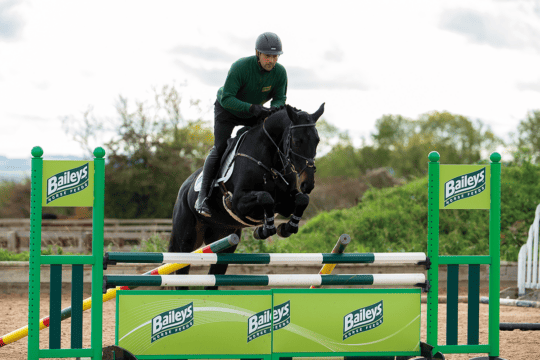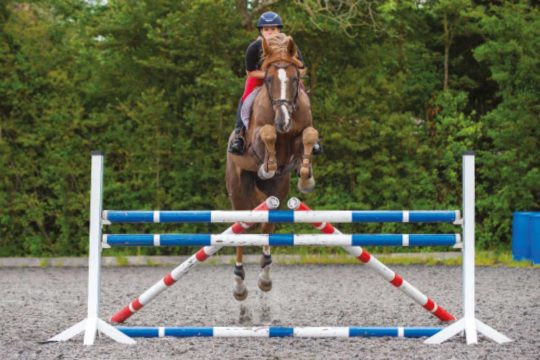-
Riding Schooling and Training
-
Health and Veterinary
-
Management
-
Mind Matters
-
Buying and Selling
-
Insurance Advice
FAQs
Want to practise your cross-country skills, but don’t have a course to school on? Top eventer Nick Gauntlett helps you tackle every type of cross-country fence using just one arena-based exercise
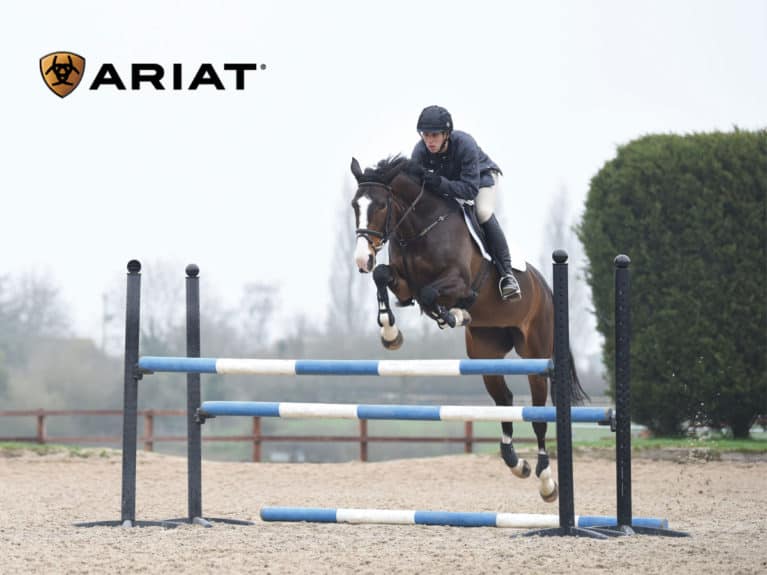
Whether you’re preparing for your horse’s first cross-country course outing, looking to sharpen up your technical skills before your next event or you simply don’t have consistent access to cross-country schooling facilities, there are plenty of reasons why you might want to bring your training sessions into the arena. Practising the concepts of cross-country over showjumps is a useful way to develop boldness and build your understanding of technical questions. I like to use it as a precursor to the real deal with many of my horses.
A shift in power
One of the biggest mistakes riders make on course is they try too hard. We all want to find the perfect stride and place our horses in it, but it’s not always possible and nor is it safe to set the precedent that striding is the rider’s job. Not even the top riders get it right all the time, after all.
For cross-country to be as safe as possible and for quick, clean rounds, it’s crucial that your horse takes some of the responsibility for assessing and answering the question himself. Your job is to make sure he has enough power in his stride and that he’s travelling rhythmically, and once you’ve shown him the fence, it’s his job to make it to the other side. That’s why practising over fences that fall down easily is so useful – it gives you both the chance to build confidence in one another and in your own abilities, with much less risk. Start as small as you need to and build up to bigger fences once it all clicks into place.
The three types of fence
At first glance, it may seem as though cross-country fences are so varied it’s impossible to broadly categorise them, but when you strip away the dressings there are actually only three types of solid fence you’ll encounter on course. Each requires a slightly different approach…
Oxer
Any cross-country fence with some width to it falls into this category. Oxers that are sloping or ascending can be ridden like steeplechase fences, as they have a wide margin for error.
How to approach it… You don’t have to set your horse up too much for them and you’ll see top-level riders approach them in a big, open stride, as they give you a chance to make up some time. If you don’t see a stride to an oxer, it doesn’t matter because if you’re approaching in a forward canter, your horse will cruise down and pop over it. Enjoy these fences – this is the closest you’ll get to feeling like a jockey when you’re out on course.
Rider position… Off the saddle in a two-point seat.
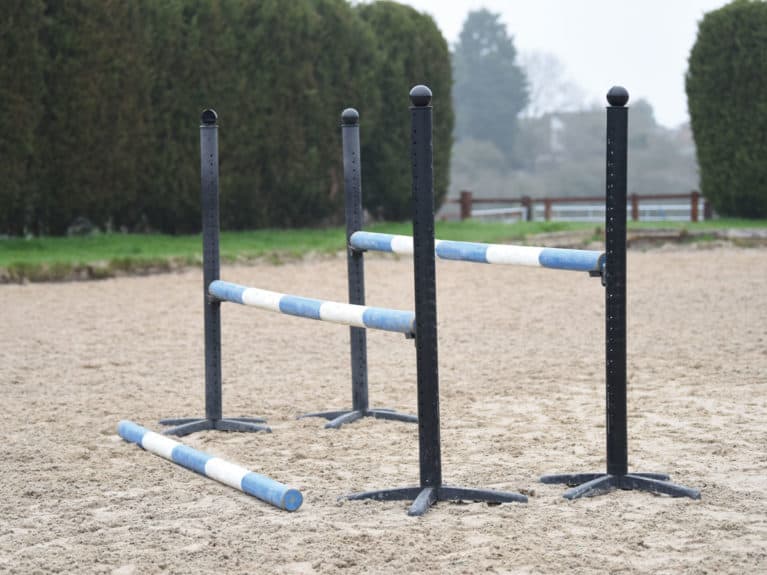
Upright
This type of fence requires more set-up as you ride towards it, because it’s not quite as forgiving as an oxer and can often be paired with a drop or a change in terrain on the other side.
How to approach it… You must be able
to convey to your horse that there could be more to the question than meets the eye, which means changing your body position by bringing your upper body back and asking him to adjust into a more contained, bouncy canter. Creating and maintaining energy and rhythm are your key jobs as a rider, but the more upright a fence, the more important balance becomes, too. If your horse starts to fall onto his forehand, he’ll have to heave his shoulders out of the way to clear the fence, but keeping your body back will take any extra weight off his front end.
Rider position… A tall, light seat.
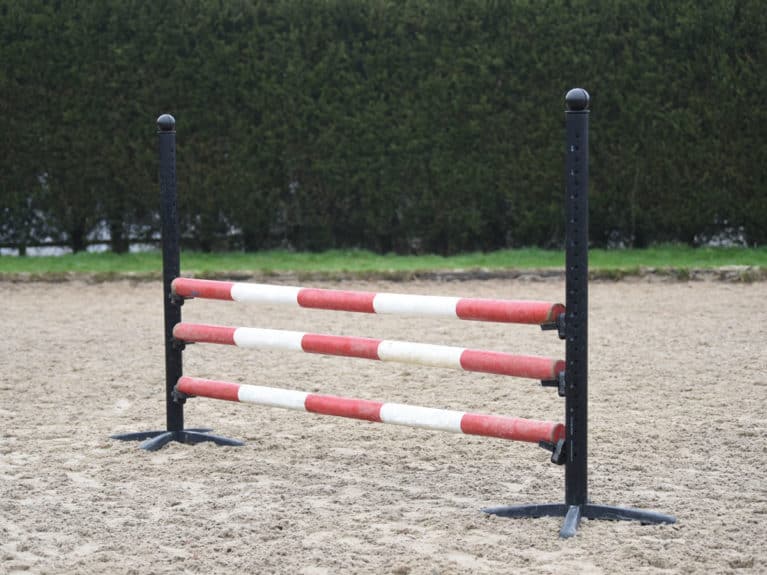
Combination
The most extreme type of combination you’ll find is a bounce, but practising over them makes the more common one, two or three-stride combinations easier.
How to approach it… You’ll need to really condense your horse’s pace down into what’s commonly referred to as a ‘coffin canter’ – a very powerful, short, bouncy gait that’s perfect for combinations – using the shifting of your upper body slightly behind the movement as your primary tool of communication. This brings your horse’s shoulders up as your leg encourages his hind end to keep taking long strides underneath him, giving him more time to understand what’s coming. When you reach the fence, allow him to jump beneath you without altering your position too much.
Rider position… Upper body behind the motion, with your head and eyes well up.
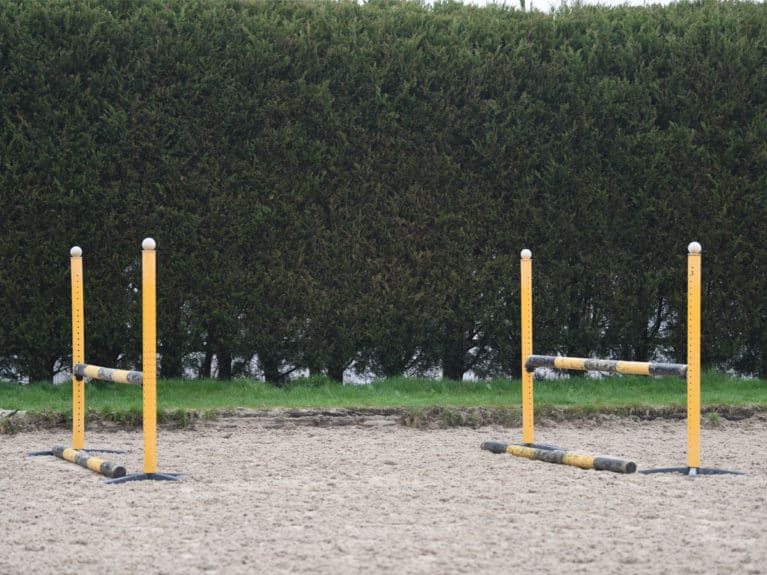
TOP TIP
If you approach a combination too fast, your horse may only see the second element at the last moment, which can cause him to leave a leg or stop. Go too slow and he’ll lose the power necessary to propel himself off the ground twice.
Going forward
The key to your warm-up is creating a forward canter to jump from. This helps you to more accurately replicate the conditions you’ll be working with on course and gets you comfortable with the idea of jumping at speed.
Use big, sweeping shapes and changes of rein across the diagonal, with impulsion a priority. Open your horse’s stride up by cantering forward down the long side, then sit up and shorten, circle or change the rein before opening him up again.
When you’re ready to pop over your first fence, canter boldly down to a simple, unintimidating upright without fiddling too much. Make sure you approach on both reins and practise changing the rein over the fence, too. You can then do the same over a small oxer.
The exercise
It’s all very well knowing how to approach each fence in isolation, but on a cross-country course, the questions come up fast and you might find yourself riding from one extreme to another. This means your ability to adjust quickly and appropriately, and plan those adjustments during your course walk, is key.
To practise this skill, set up this simple exercise in your arena. The point of it is, just like when you leave the start box, you know what’s coming next, but your horse doesn’t. It gives you a valuable opportunity to hone your communication and set him up so there are no surprises.
Ride it…
You’ll be riding this exercise on the right rein at first, but you can adjust and adapt it to be ridden in a multitude of ways once you’ve got the hang of it.
- Start with the oxer and ride towards it as though you need to save a second or two on course. Establish a powerful, forward canter, which will probably feel on the verge of galloping, and balance yourself out of the saddle, over your horse’s back. Keep your eyes up and your legs on, and let him power down to it and pop over it in his stride.
- On landing, sit up and ride around the short side of the school then, as you turn to ride across the diagonal, look towards the upright. Set your upper body slightly behind the motion as you ride through the corner – this should be enough to rebalance your horse and slightly alter his canter, and you shouldn’t need to pull him back. Pop over the upright.
- As you land and head towards the bounce, condense your horse’s canter right down so he feels like a rubber ball. Maintain this and let him jump through the bounce.
Set it up…
Build two uprights on a bounce stride (3–3.7m) on the long side at B. Then, place an ascending oxer on the diagonal from M to K and an upright on the diagonal from F to H, as shown below. Keep the fences small until you get the hang of the exercise, then you can start to increase the height.
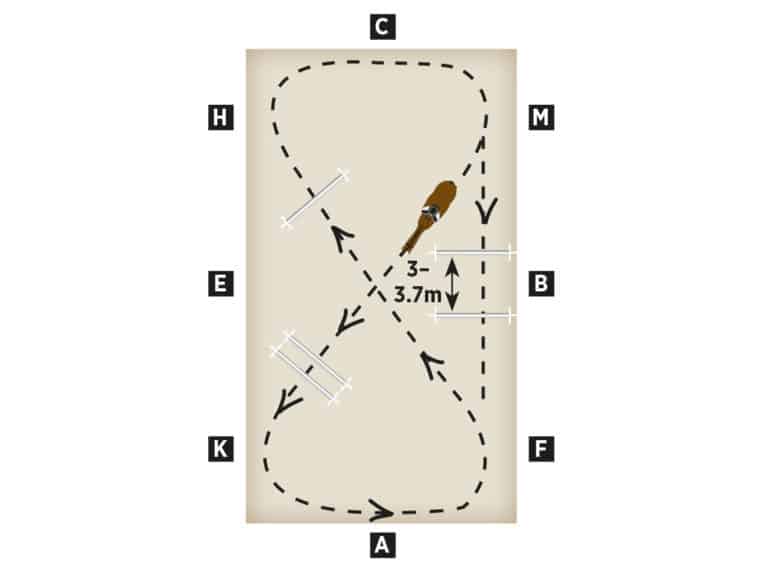
TOP TIP
Riding each jump in the appropriate position will help you get away quickly on landing and save time, because you won’t lose your rhythm.
Switch it up
Once you’ve ridden this exercise a few times, you can switch up the order a bit. Try riding over the oxer, and heading to the bounce on the left rein, then going up the diagonal over the upright. Changing the order you tackle the fences in will keep your horse on his toes and listening to you, as he won’t know what to expect.
If you’d like to up the technicality, you can make the distance between the fences shorter, too, by moving the bounce closer to a corner or moving the upright and oxer along the diagonals. This gives you slightly less time to change the type of canter, which means you need to plan a few strides ahead and aim to ride your new canter upon landing from each fence.
Practice makes perfect
This exercise is something I like to do regularly with my horses to refresh their training, polish what they already know and introduce new skills. Incorporating it into your own training will mean you’re far more prepared for the fences you’ll need to tackle when you’re cross-country schooling or competing, increasing your chances of a safe, tidy clear round.
With thanks to Ariat for their help with this feature, ariat.com




